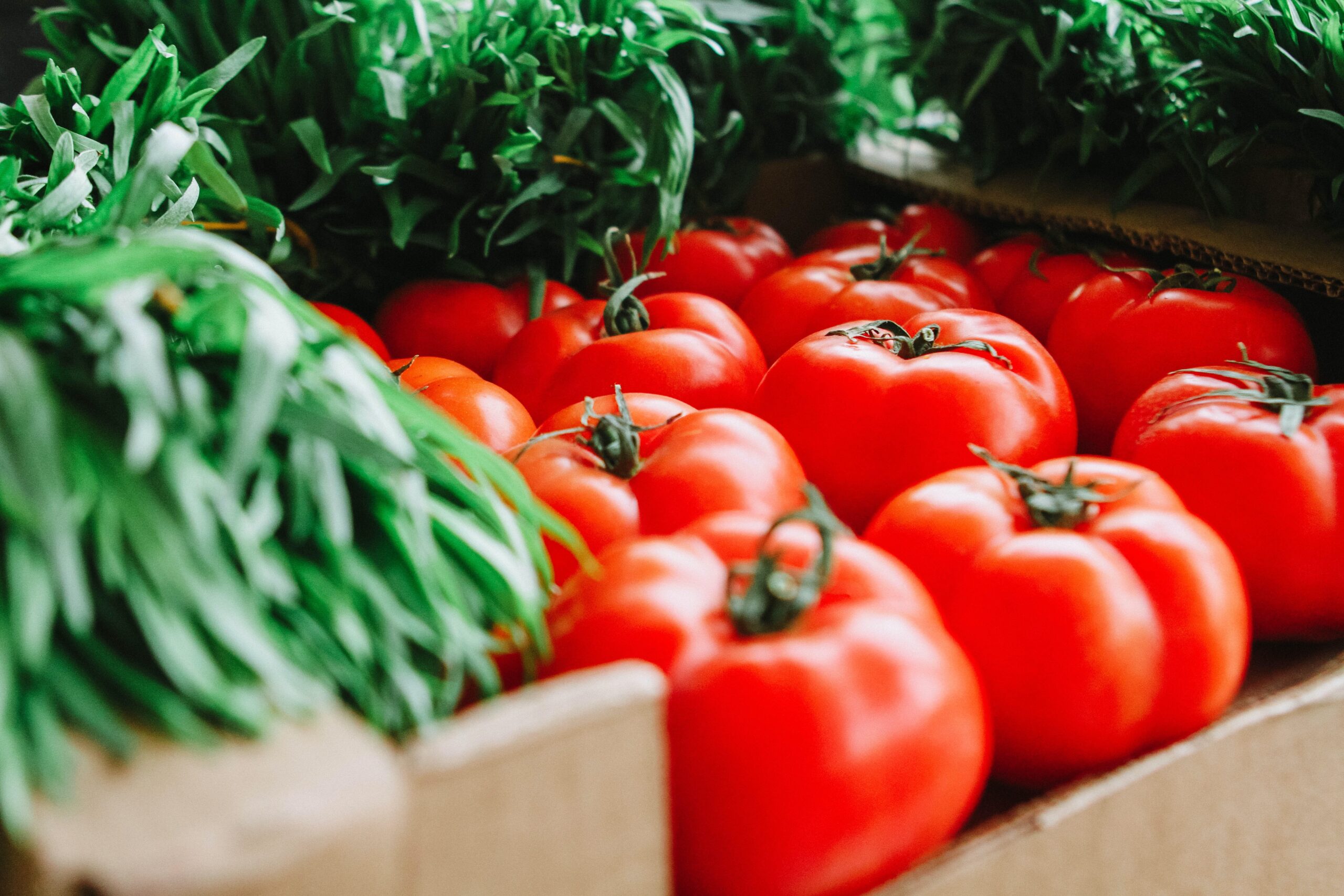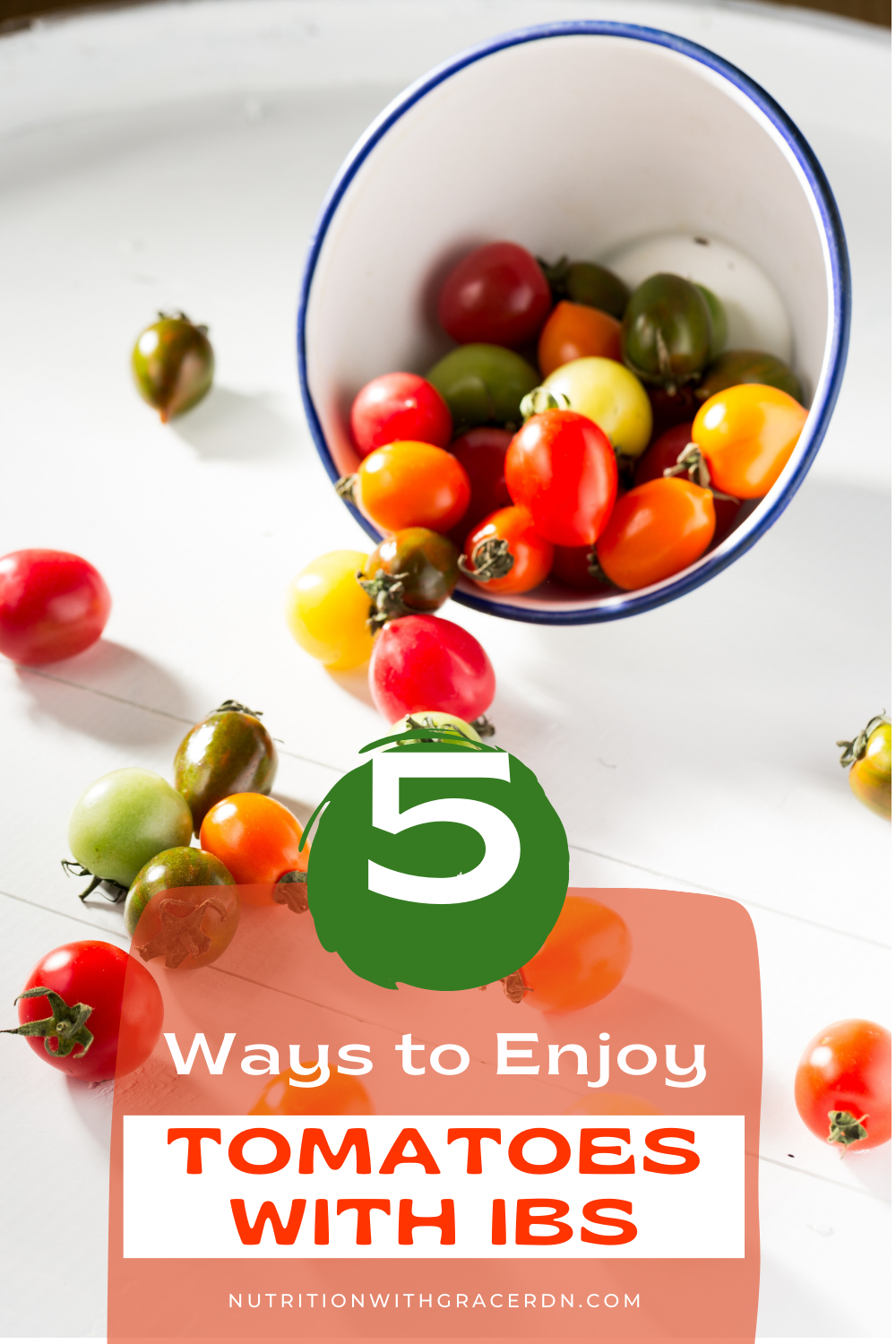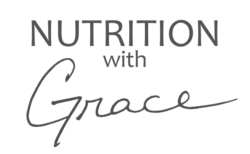table of contents
Ever ask yourself, can tomatoes be incorporated into a healthful diet that doesn’t trigger an IBS flare up?
Well you’re in luck, this article will cover what makes tomatoes a great addition to a healthful diet, why you may be experiencing uncomfortable symptoms when you eat tomatoes and lastly, 5 easy ways to enjoy tomatoes when you have IBS.
Let’s dive in!
What is IBS?
IBS, or irritable bowel syndrome, is a common problem that affects about 20% of the world’s population and is most often seen in women. (1) It is defined as “abdominal pain or discomfort that occurs in association with altered bowel habits over a period of at least three months.” (2)
IBS is challenging to diagnose because there is no medical test that can definitively say you have IBS. Therefore, it is often used as a blanket diagnosis when all other conditions have been ruled out. (3)
Once you’ve been diagnosed with IBS, however, treatment is also challenging. In many cases, patients are given information about the low-FODMAP diet (FODMAPS are fermentable carbohydrates that can cause uncomfortable gut symptoms in some) from their doctor and sent on their way, left to fend for themselves.
They are not told that the low-FODMAP diet is not meant to be followed for the rest of their lives or given any guidance about the nuances. And tomatoes are a perfect example of a food that is low-FODMAP in it’s raw or fresh form, but are often mixed with other hidden ingredients that can cause a flare up.
This is all very confusing if you don’t have the support of someone, like a gut-health dietitian, to help you sort through what’s going on in your body. We’ll learn more about tomatoes and their relationship to IBS, but first let’s look at tomatoes on their own.
Nutritional Benefits of Tomatoes
Tomatoes are a highly underrated nutritionally-rich food in the US, however, they are one of the most important sources of nourishment throughout the world. In fact, 18 kg of fresh tomatoes per capita are consumed annually in Europe, compared to 8 kg per capita in the US. (4)
These fruits are high in vitamins, minerals, and soluble and insoluble fiber. They even contain some protein, fat, and phytosterols, which is a plant compound that blocks cholesterol from being absorbed by the body and can help with weight loss. (5)
They are also a great source of antioxidants, which help rid the body of toxins and protect against chronic diseases, including cardiovascular disease. These antioxidants include:
- Vitamin C
- Vitamin E
- Carotenoids (compounds that give tomatoes their color)
- Polyphenols (such as quercetin)

Other benefits of eating tomatoes include preventing constipation, reducing high blood pressure, improving blood circulation, and maintaining bone structure and strength. (5)
As you can see, finding ways to incorporate tomatoes into your diet is a great way to boost your overall health, including your digestion.
That being said, some people experience negative side effects after eating tomatoes. If you experience any of the following, please consult your healthcare professional before increasing your tomato consumption:
- Renal/kidney issues
- Heartburn/reflux
- Migraines
- Arthritis
The Relationship Between IBS and Tomatoes
When you have IBS, tomatoes are a great food to include in your diet for a couple of reasons. They are:
- low-FODMAP and tend to be well-tolerated.
- versatile and can be eaten in so many different ways, i.e. fresh, canned, as a sauce, in a soup, etc.
- nutrient-rich.
However, as is life, it’s never as straight forward as it sounds. If you have IBS and are experiencing uncomfortable gut symptoms after eating tomatoes, it’s worth looking into a few things.
Do you have a histamine-intolerance?
Histamines are compounds that are released in response to something you are allergic to. You know that runny nose, itchy throat, and watery eyes you get in the spring? Those are all caused by histamines. A histamine intolerance occurs when histamine levels are too high and/or the body is unable to break them down. (6)
Foods can also contain histamines at varying levels. If your body has a hard time processing histamines, eating these foods will lead to symptoms such as:
- Classic allergy symptoms (runny nose, itchy throat, and watery eyes)
- Stomach pain
- Diarrhea
- Vomiting
- Headaches
- Hives
- Dermatitis
- Heart arrythmias
Tomatoes are considered to have high amounts of histamines and can therefore trigger the above symptoms in those with an intolerance. Before changing your diet, consult your healthcare professional if you suspect you have a histamine intolerance.
Are you experiencing reflux?
Heartburn is the most common symptom of gastroesophageal reflux disease (GERD), but not everyone experiences this. It is possible to have GERD if you only experience the following symptoms: (7)
- Bad breath
- Coughing
- Stomach pain
- Nausea
- Vomiting
Diet plays a huge role in GERD symptoms. Fatty foods, mint, chocolate, alcohol, caffeine, acidic foods, and spicy foods can all lead to the uncomfortable symptoms listed above. Tomatoes and tomato products are considered acidic and can therefore trigger a reflux flare up in many.
If these symptoms sound familiar, consult your health practitioner and get tested for GERD.
What about a nightshade intolerance/allergy?
A nightshade intolerance or allergy is rare, but worth looking into if you haven’t been able to find answers elsewhere. It’s important to know the distinction between an allergy and an intolerance if you think this may apply to you.
An allergy is an immune response to a certain food or compound (usually a protein) and can be life threatening. While the symptoms of an intolerance are usually focused in the GI tract and can cause gas, bloating, heartburn, nausea, and diarrhea. This is because your body has a hard time digesting those foods. (8, 9)
Nightshades are a family of flowering plants that contain thousands of species. Some of them are edible (like tomatoes, eggplant, bell peppers, and cayenne) and others are not. (8)
If tomatoes aren’t the only nightshade causing symptoms for you, consult your health practitioner.
Did you read the ingredient label?
The versatility of tomatoes can actually be a double-edged sword for people with IBS. For example, processed foods like marinara, pizza sauce, ketchup, and even soup are often prepared with high-FODMAP foods mixed in for flavor.
These extra foods include garlic, onions and sugar, which normally wouldn’t be an issue but are common trigger foods for IBS. If you are buying pre-made versions of foods like marinara and pizza sauce, search the ingredient label for foods on the high-FODMAP list.
Check out this great company, Fody Foods, which makes all your favorite products in low-FODMAP versions!
IBS and Tomatoes: Are They Triggering My Symptoms?
How do you find out if tomatoes are actually what’s triggering your symptoms? A great place to start is by keeping a gut health journal. In this journal you can track:
- What you eat
- How you feel right after you eat, 3 hours later, 1-2 days later
- Water intake
- Mood
- Stress level
- Sleep
All of these things play a significant role in your digestion. By keeping a journal, you will begin to see patterns and will be able to identify what triggers you.
A great journal (that I have even purchased for myself) is My Tummy Diary by You’ve Gut This’s founder, Lottie Drynan. One of many amazing elements in this journal is that it’s been reviewed by nutrition and psychology experts and provides you with so much more than just a food tracker. Grab yours today!
Now, what you’ve all been waiting for…

5 Ways to Enjoy Tomatoes with IBS
1. Pay attention to serving size: Ever heard of the term, FODMAP stacking? Basically, everyone has a threshold of each FODMAP group that they can tolerate. This threshold varies from person to person and from food to food and the only way to find out yours is to test each food during the reintroduction phase. Below are some general serving size guidelines for different tomato products. (Remember, it’s important to test your individual tolerance.) (9)
- 5 cherry tomatoes
- 1 Roma tomato
- 1/2 cup canned tomatoes (plain)
- 2 Tbsp tomato paste (plain)
- 2 pieces sundried (fructose concentration increases with drying)
2. Ripeness: Monash University is located in Melbourne, Australia and is the leading institution researching how the low-FODMAP diet can be used to manage IBS. According to their research, tomatoes are considered low-FODMAP, however, they only tested ripe tomatoes in their studies. This means that there is little research evaluating the FODMAP levels of green tomatoes. That being said, other produce has shown varying levels of FODMAPs based on their ripeness, so it is recommended to stick to the ripe ones.
3. Look for hidden high-FODMAP foods: The most common ones to look out for are garlic and onions – in foods like marinara, pizza sauce, and pre-made soups – and added sugar or high-fructose corn syrup – in foods like marinara and ketchup.
4. Pair with low/non-FODMAP foods: This has to do with FODMAP stacking, which we talked about when we talked about serving sizes. It’s important to be mindful of what you’re eating together and how much.
5. Make your sauces and soups at home: The best way to make sure you are eating tomato sauces and soups that won’t cause a flare up is to make them yourself. You can also purchase similar pre-made products from certified low-FODMAP companies like Fody Foods. Try these recipes from blogs dedicated low-FODMAP recipes:
Final Thoughts
All in all, tomatoes are a rich source of fiber and vitamins, such as vitamin C and vitamin E. They are also low-FODMAP, so they can be a great addition to whatever IBS-friendly diet you are on and can be enjoyed in many ways.
A few things to pay attention to are the portion size, the ripeness, and the other foods/ingredients being eaten at the same time. Lastly, the best way to find out if a food is triggering your symptoms is to keep a detailed gut health journal. I think you’ll be surprised at what you find out about yourself after a couple of weeks.
want this article?
download now, reference later!
jumpstart your journey to better gut health







This Post Has One Comment
Everything is very open with a really clear explanation of the issues.
It was definitely informative. Your website is very helpful.
Many thanks for sharing!